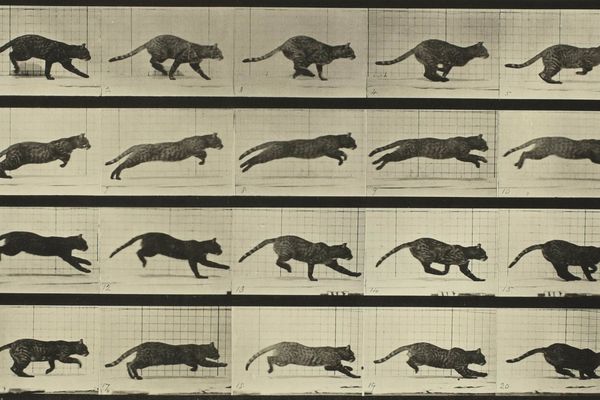Analyze an animal's gait
Observe and analyze an animal's gait by filming or sketching steps, measuring stride length and timing, then compare walking, trotting, and running patterns.


Step-by-step guide to analyze an animal's gait
Animal Movement | Animals in Action | How Do Animlas Move | Science Lesson | Educational Video |
Step 1
Pick one animal to study and write its name at the top of your notebook.
Step 2
Find a safe flat straight area where the animal can walk and tell an adult where you will work.
Step 3
Use the measuring tape to measure 2 meters on the ground and note the two end points.
Step 4
Mark the two end points clearly with chalk or masking tape.
Step 5
Decide whether you will film the animal or sketch its steps and get your camera set up or stand ready with your notebook.
Step 6
Encourage the animal to walk across the 2-meter path at a normal walking speed while you film or watch.
Step 7
Time the crossing with your stopwatch from the moment the animal’s first foot crosses the start line until the last foot crosses the end line and write the time in your notebook.
Step 8
Count the number of full strides the animal made across the 2 meters and write that number down.
Step 9
Calculate the average stride length by dividing 2 meters by the number of full strides and record the result.
Step 10
Repeat Steps 6 to 9 two more times: once while the animal trots and once while it runs, recording times and stride counts for each gait.
Step 11
Write short notes comparing walking trotting and running by listing which gait had the longest stride and which was the fastest and add a quick sketch of the foot positions for each gait.
Step 12
Share your finished observations sketch photos or video and your notes on DIY.org.
Final steps
You're almost there! Complete all the steps, bring your creation to life, post it, and conquer the challenge!

Help!?
What can we use if we don't have a measuring tape, chalk, or a stopwatch?
Use a known-length rope or two 1‑meter sticks taped together to mark the 2 meters (step 3), small rocks or a jump rope instead of chalk/masking tape to mark endpoints (step 4), and a smartphone timer for the stopwatch and camera (steps 5–6).
What should we do if the animal won't walk straight or keeps stopping during the trial?
If the animal won't walk cleanly across the 2‑meter path (steps 5–6), have an adult guide or gently encourage it with a familiar person or treat, film from the side to catch every footfall for accurate counting (steps 6–8), and re-mark the start/end if the tape or chalk has moved (step 4).
How can we adapt the activity for younger children or make it more challenging for older kids?
For younger kids, reduce the distance to 1 meter and have an adult do the timing and stride counting (steps 3, 6–8), while older kids can repeat runs for multiple animals, compute average stride lengths, and compare gaits with graphs (steps 9–11).
How can we extend or personalize the gait analysis to make it more interesting?
Extend the project by using slow‑motion video to study foot positions for your sketches (steps 5–6 and 11), compare stride length versus crossing time across walking, trotting and running (steps 8–9), and upload annotated photos or a short report to DIY.org (step 12).
Watch videos on how to analyze an animal's gait
How Do Animals Move? | Jack Hartmann
Facts about animal locomotion
🐆 Cheetahs use a super-flexible spine and huge strides to sprint much faster than their walking speed, making them exceptional sprinters.
🎥 Filming in slow motion or at higher frame rates makes it easy to count footfalls and measure stride length and timing accurately.
🐎 Horses use distinct gaits (walk, trot, canter, gallop) and some breeds also perform a pacing gait where lateral legs move together.
🐾 Trotting is a diagonal gait — a front leg and the opposite hind leg move together, creating a steady two-beat rhythm.
🩺 Veterinarians and scientists use gait analysis to detect injuries, monitor recovery, and improve animal performance.
How do I analyze an animal's gait by filming or sketching steps?
What materials do I need to measure an animal's stride length and timing?
What ages is this animal gait activity suitable for?
What are the benefits of observing and comparing walking, trotting, and running patterns?


One subscription, many ways to play and learn.
Only $6.99 after trial. No credit card required



